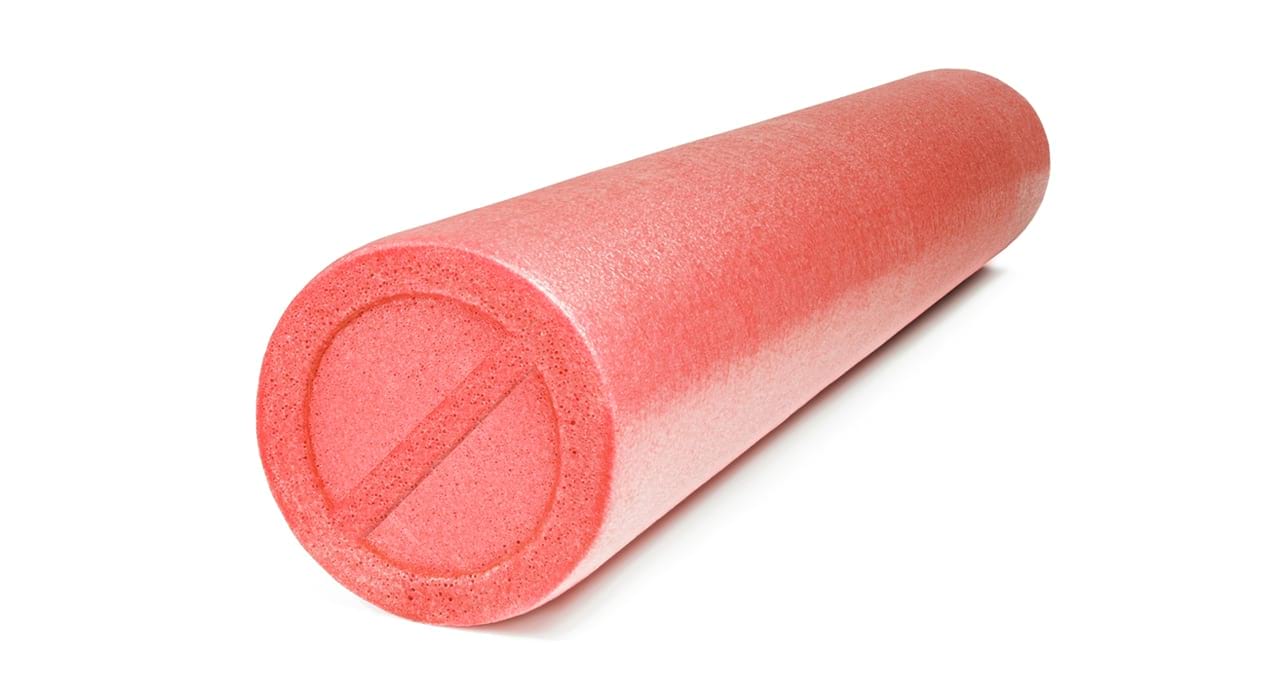The iliotibial (IT) band is a line of connective tissue that runs down the outside of your thigh. It takes a beating while running, cycling, lifting, and just about any other challenging activity. So it gets stiff and painful, leading to one of the most common overuse injuries: iliotibial band syndrome (ITBS).
Most people foam-roll the IT band, hoping that it will provide relief but, in reality, the IT band isn’t the issue: it’s weakness of the glutes is the problem. Strong glutes stop your knees buckling inward as you squat, sprint or land from a jump. Unfortunately, most people lack strength in the glute fibers to offset knee buckling.
The next muscle in line to take over is the tensor fascia latae (TFL), a smaller muscle underneath each front pocket of your jeans. The key point to understand here is that the TFL inserts into the IT band. So when the glutes are weak, during exercise the TFL stiffens and shortens due to being overworked. This causes the IT band to stiffen as well so that when you activate the glute fibers that pull the knees outward, it allows the TFL to relax, which immediately releases tension in the IT band.
1. Test yourself
OK, ignore the headline for now and spend 15-20 seconds rolling each IT band with a foam roller. If you feel extreme stiffness and soreness, you have ITBS. No foam roller? Try the lying straight leg raise. Lie on your back, legs straight, with your feet pointed up, then slowly lift the right leg as high as possible. Lower the right leg and repeat with the left.
Make a note of how far you could lift each leg, and the amount of tension you felt in your IT band. The highest level of tissue tension during a straight leg raise is in the IT band. So, when you reduce the tension, you’ll be able to lift each leg higher and there will be less tension felt in the IT band.
2. Perform the lateral step with a mini-band
Place a mini-band just above the knees. Stand tall and then push your hips back as if you’re starting the lowering phase of a deadlift, just enough so the knees bend slightly. Hold that posture throughout the exercise while maintaining a neutral spine. Then, stretch the band by pulling the knees apart then take five slow steps to the right, followed by five slow steps to the left.
Keep your knees directly over your feet to activate the glute fibers that pull the knees outward. You’ll feel this working the glutes in the outer hip region, not in the quadriceps or low back. Do three sets of five steps in each direction, resting 30 seconds between sets.
3. Reassess the tension in your IT band
Either roll each IT band over a foam roller and determine how much less pain you feel, or repeat the lying straight leg raise to see how much higher you can lift each leg.
4. Make it part of your workout schedule
The best place to use the mini band lateral step is before your workouts as it reduces tension in the IT band and activates the glute fibers that are typically weak. This will immediately boost your performance and reduce stress to your knees, since they won’t buckle inward. Your squat, lunge, sprints, jumps and every other exercise that involves your hips and knees will see huge benefits.
Find workouts and more in every issue of TRAIN magazine.







